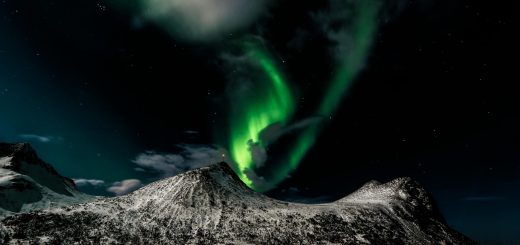The Mysterious Disappearance of the Anasazi

Hey there, amazing readers! 🖐️ Just a quick note: yes, we know there are a lot of ads here. Trust us, we get it—it’s not the prettiest look, but they help us keep this blog alive and kicking. Those pesky little ads cover the costs of all the behind-the-scenes magic, from hosting and tech stuff to creating content we hope you’ll love.
We’re committed to delivering quality posts, and your support (even just sticking around despite the ads) means everything to us. So, bear with us, and thanks for helping us keep the good vibes rolling. Now, on to the fun stuff! 😉
TRANSLATE BUTTON AT THE END OF THE ARTICLE
A Quick Overview
The Anasazi, a fascinating ancient civilization, inhabited the Southwestern United States, primarily in what we know today as Arizona, New Mexico, Utah, and Colorado.
They rose to prominence around the 12th century and left behind stunning architectural remnants and complex societal structures.
However, their sudden disappearance around the 13th century sparks intrigue and speculation.
What happened to them?
Let’s dive deep into this captivating story and explore the elements that shaped the rise and fall of the Anasazi.
The Enigmatic Anasazi: Who Were They Really?
The term "Anasazi" translates to "ancient ones" in Navajo, but who were they, really?
I often think about the lives they lived so many centuries ago.
These people were part of a broader culture referred to as the "Ancestral Puebloans." They were not just skilled builders and farmers; they were artists, spiritual beings, and community-focused individuals.
Anasazi society was hierarchical yet communal.
They lived in large kinship groups, sharing resources and responsibilities.
Their primary language belonged to the Uto-Aztecan family, but we still have limited knowledge about their social structure.
What we do know is that they were adept at adapting to their environment, which was anything but easy.
The Anasazi were also deeply spiritual.
They believed in a variety of gods and forces of nature, and their connection to the land played a crucial role in their daily lives.
They practiced various rituals that reflected their beliefs about the cosmos and the changing seasons.
It’s fascinating to think about how their worldview influenced everything, from their art to their architecture.
In terms of identity, the Anasazi were not a monolithic group.
They lived in distinct regions, and their customs varied widely.
This diversity adds a layer of complexity to our understanding of them.
So when we talk about the Anasazi, we’re talking about a rich tapestry of cultures woven together by shared experiences and common challenges.
Their Rise to Greatness: The Anasazi Civilization Flourishes
The Anasazi civilization experienced significant growth between 900 and 1150 AD.
This period saw a dramatic increase in the population and the establishment of complex societies.
I often marvel at how they managed to thrive in a region where water was scarce and temperatures could be extreme.
The establishment of agriculture was a key factor in their prosperity.
They mastered the art of farming by utilizing irrigation techniques, which allowed them to cultivate the land effectively.
Crops like corn, beans, and squash became staples, and their diets were diverse and nutritious.
It’s impressive to think about how they created sustainable systems in such a challenging environment.
Trade networks also played a significant role in their growth.
The Anasazi exchanged goods with neighboring tribes, including pottery, textiles, and even exotic items like turquoise.
It’s as if they built bridges of commerce that linked them to distant communities, enriching their culture and economy.
As social structures developed, so did their craftsmanship.
The Anasazi became renowned for their intricate pottery, weaving, and jewelry.
Each piece told a story, and their artistry remains a testament to their creativity.
The cultural richness of this civilization is genuinely a marvel, as it reflects both their practical needs and their spiritual beliefs.
However, with this rise came challenges.
The increasing population put a strain on their resources.
As I think about it, it’s reminiscent of how we sometimes struggle to balance growth with sustainability.
The Anasazi faced similar dilemmas, paving the way for the next chapter of their story.
Intriguing Architecture: The Wonders of Cliff Dwellings
One of the most iconic features of the Anasazi civilization is their architecture, especially their cliff dwellings.
These breathtaking structures were built into the sides of cliffs, offering both protection and an impressive view.
It’s hard not to be awed by the engineering skills they displayed.
The most famous of these cliff dwellings is Cliff Palace at Mesa Verde National Park, an architectural wonder that still draws visitors today.
Imagine living in a structure where the walls are not only your home but also a canvas for your culture.
The intricate designs carved into the stone tell stories of daily life and spiritual significance.
The construction techniques used by the Anasazi were innovative.
They combined sandstone blocks and adobe mortar, creating durable structures designed to withstand the elements.
It’s a bit like building a cozy fortress, where every stone was placed with purpose.
They faced the sun to maximize warmth and strategically positioned windows to capture cool breezes.
Moreover, these cliff dwellings served more than just a practical purpose; they were communal hubs.
Families gathered for meals, ceremonies, and storytelling.
Walk into one of these sites today, and you can almost hear the echoes of laughter and shared experiences.
The architectural choices reflect a deep connection to both the land and their social fabric.
As I explore the remnants of these cliff dwellings, I feel a sense of awe.
They stand as a testament to the Anasazi’s ingenuity and adaptability.
It’s a reminder that even in the face of adversity, humans can create beauty and functionality, intertwining their lives with the landscape around them.
Agriculture Secrets: How They Thrived in Arid Lands
The Anasazi were agricultural pioneers, and their method of farming in arid landscapes is worthy of admiration.
They faced a tough climate, where rain was sparse and droughts were common.
Yet, they found ways to cultivate the land and sustain their communities.
Key to their success was irrigation.
They constructed intricate systems of ditches and canals to channel water from nearby rivers and streams.
It’s like they were sculptors, shaping the land to meet their needs.
This clever engineering allowed them to water their crops effectively, even in the driest seasons.
Crop rotation was another tactic that the Anasazi employed.
They understood the importance of soil health, switching crops to prevent depletion.
Corn, beans, and squash were often grown together, a combination known as the "Three Sisters." This method not only maximized space but also supported each other’s growth.
When I think about their agricultural techniques, I’m reminded of how we can learn from nature’s balance.
Additionally, they practiced dry farming techniques, letting crops adapt to the available moisture.
Instead of relying solely on irrigation, they cultivated drought-resistant varieties.
This adaptability is a lesson for modern agriculture, especially as we face climate challenges today.
In essence, the Anasazi turned adversity into opportunity.
They cultivated their spirit of innovation, which allowed them to thrive even in harsh conditions.
It’s a remarkable story of resilience that resonates deeply with anyone grappling with challenges in their own life.
Cultural Richness: Art, Rituals, and Community Life
The Anasazi civilization was a vibrant cultural melting pot.
Their artistic expressions, rituals, and community life painted a rich picture of their existence.
I find it fascinating to consider how art was not just a hobby, but a way of life for them.
Their pottery is perhaps the most well-known aspect of Anasazi art.
Adorned with intricate designs and vivid colors, each piece reflected both practical use and ceremonial significance.
I can’t help but admire the craftsmanship and creativity that went into each bowl and jar.
They didn’t just make pottery; they created stories.
Ceremonial rituals played a significant role in their society.
The Anasazi celebrated seasonal changes with elaborate ceremonies, often involving music, dance, and offerings to the deities.
These gatherings fostered community cohesion, much like how we come together for festivals today.
Imagine being part of a vibrant celebration, connecting with both the land and your neighbors.
The Anasazi also expressed their beliefs through rock art, known as petroglyphs.
These carvings provide glimpses into their spiritual life, depicting animals, human figures, and cosmological symbols.
It’s like they left a visual diary for future generations to ponder.
Each image invites us to wonder about their stories and meanings.
Community life was centered around cooperation and collaboration.
They worked together in farming, building, and ceremonies, fostering a strong sense of belonging.
I find it heartwarming to think about how they thrived through shared experiences and collective efforts.
Ultimately, the rich cultural tapestry of the Anasazi serves as a reminder of the importance of creativity, cooperation, and connection.
Their legacy is a beautiful echo of what it means to be human.
The Mysterious Shift: What Prompted Their Disappearance?
The Anasazi civilization, which once thrived, ultimately experienced a significant shift leading to their disappearance.
This transition raises many questions and sparks curiosity.
What happened to this once-flourishing society?
I often ponder the events that could have changed their fate.
Around the late 1200s, the Anasazi began to abandon their cliff dwellings and agricultural fields.
While some evidence suggests a gradual decline, the sheer scale of the disappearance raises eyebrows.
It’s not just a simple case of moving away; entire communities vanished.
An unsettling mystery lingers, leaving us to wonder what caused this drastic shift.
Various theories have emerged to explain their exodus.
Some suggest resource depletion, as the growing population strained their agricultural systems.
As I think about it, it’s reminiscent of modern cities facing urban sprawl—too many people and too few resources can lead to dire consequences.
Another theory revolves around climate change.
Researchers indicate that the region faced severe droughts during this period.
Imagine relying on a tenuous water supply, only to have it cut off.
The impact on agriculture would have been devastating.
It’s heartbreaking to think about how nature can turn against those who depend on it.
Additionally, increased conflict with neighboring tribes has been suggested as a contributing factor.
As resources dwindled, competition for land and water intensified.
The idea of communities clashing over survival is sobering.
It reflects a broader struggle that societies have faced throughout history.
Ultimately, the Anasazi’s disappearance is a complex puzzle.
It likely wasn’t a single event but a combination of factors that pushed them to the brink.
Understanding this shift helps us contemplate our own relationship with the environment and the delicate balance we must maintain.
Climate Change: Nature’s Role in Their Vanishing Act
Climate change looms large in the narrative of the Anasazi’s decline.
The Southwestern United States, where they thrived, has always been a challenging environment.
However, during the late 13th century, environmental shifts played a critical role in their fate.
Researchers have pointed to a period of prolonged drought known as the "Great Drought," which spanned from the mid-1200s to the early 1300s.
Imagine facing years of devastating dryness.
It’s hard to fathom the stress and uncertainty that would have gripped the Anasazi communities as their crops failed and water sources dwindled.
This prolonged drought would have had a cascading effect on their agricultural practices.
The irrigation systems, which had once been a lifeline, could not sustain the demands of an ever-growing population.
As the fields lay barren, the Anasazi faced the grim reality of food shortages.
Moreover, the drought likely strained social ties.
Community cooperation, which had been essential to their survival, may have faltered as competition for diminishing resources intensified.
It’s reminiscent of how communities today can become strained in times of crisis.
The pressure can lead to disunity instead of collaboration.
While some may argue that the Anasazi could have adapted, it’s essential to recognize the limits of resilience.
Even the most skilled farmers can’t control the weather.
The unpredictability of climate is a force that has shaped human history, and it’s a lesson we must heed.
The Anasazi’s experience serves as a poignant reminder of the profound impact climate can have on civilizations.
As we navigate our own environmental challenges today, we can draw insights from their story about the importance of sustainability and respect for nature.
Conflicts and Alliances: Social Dynamics Explored
The social dynamics among the Anasazi were complex.
Their society included various clans and families, each with its own unique customs and practices.
While cooperation was essential for survival, the possibility of conflict was always lurking around the corner.
As resources became scarce due to population growth and environmental changes, competition among communities intensified.
It’s like a high-stakes game of survival, where every player is fighting for their share of the pie.
This competition could lead to skirmishes or even full-blown conflict.
At the same time, the Anasazi were not isolated.
They engaged in trade with neighboring tribes, creating a web of alliances and interactions.
This network allowed for the exchange of goods, ideas, and cultural practices.
It’s fascinating to think about how they navigated these relationships, balancing trade and cooperation with the potential for conflict.
Archaeological evidence suggests that some communities fortified their dwellings.
This indicates an awareness of potential threats from neighboring groups.
It’s a compelling illustration of the delicate balance between cooperation and competition that defines human interactions.
In times of crisis, alliances could shift, leading to unexpected collaborations.
Communities might unite against a common threat, much like how we sometimes band together in the face of adversity today.
This adaptability is a testament to the resilience of the human spirit.
Ultimately, the social dynamics of the Anasazi reflect the complexities of community life.
They navigated a landscape where cooperation and conflict coexisted, shaping their experiences and decisions.
Archaeological Discoveries: Clues from the Past
Archaeological research has revealed fascinating insights into the lives of the Anasazi.
Each discovery offers clues about their society, culture, and eventual decline.
It’s like piecing together a grand jigsaw puzzle, with each artifact telling part of the story.
Excavations at sites like Chaco Canyon and Mesa Verde have uncovered artifacts ranging from pottery to tools.
Each item reveals details about their daily lives, trade practices, and artistic expressions.
I often find myself captivated by how these small pieces can speak volumes about a civilization that thrived centuries ago.
Petroglyphs, the rock carvings left by the Anasazi, are particularly intriguing.
They provide a visual narrative of their beliefs, rituals, and interactions with the environment.
As I gaze at these ancient images, I can’t help but feel a connection to the people who created them.
Their artistry captures moments of joy, reverence, and struggle.
Analysis of settlement patterns has also shed light on their social structures.
Researchers have mapped out the locations of dwellings and ceremonial sites, helping us understand how they organized their communities.
It’s like drawing a roadmap of their lives, providing insights into their relationships and priorities.
Radiocarbon dating has been crucial in determining timelines, allowing us to piece together the sequence of events in Anasazi history.
Each date adds another layer to the narrative, helping us understand how their civilization evolved over time.
These archaeological discoveries are not just relics of the past; they are keys to understanding who the Anasazi were.
They remind us of the importance of preserving our history and honoring the stories of those who came before us.
Modern Perspectives: What We Can Learn Today
Examining the Anasazi’s rise and fall offers valuable lessons for modern society.
Their experience underscores the importance of sustainability, community cooperation, and resilience in the face of adversity.
It’s a timeless reminder that while we may progress technologically, the fundamental challenges of survival and community remain.
The Anasazi’s agricultural practices highlight the need for sustainable farming methods.
In an era where climate change is a pressing concern, their ability to adapt and innovate serves as a powerful example.
As we face our own environmental crises, we can draw inspiration from their ingenuity.
Additionally, their complex social dynamics remind us of the importance of collaboration.
Building alliances and fostering cooperation can lead to stronger communities.
In today’s world, where division often prevails, we can learn from the Anasazi’s ability to navigate relationships, balancing competition and cooperation.
Archaeological discoveries can also teach us about the consequences of neglecting the environment.
The Anasazi experienced the repercussions of overexploitation and resource depletion.
Their story serves as a cautionary tale, urging us to respect and care for our planet.
As we reflect on the Anasazi’s legacy, we should embrace the complexities of their experience.
Life is rarely straightforward, and their journey illustrates the multifaceted nature of human existence.
By learning from their successes and challenges, we can work towards a more sustainable and connected future.
The Legacy of the Anasazi: Influence on Future Cultures
The Anasazi left an indelible mark on history, influencing future cultures and communities.
Their architectural innovations, agricultural techniques, and artistic expressions continue to inspire generations.
I often find myself amazed at how the echoes of their existence resonate even today.
The cliff dwellings and pueblos of the Anasazi serve as blueprints for future architectural endeavors.
Their methods of constructing durable, climate-appropriate homes provide insight into sustainable building practices.
Modern architects and builders can draw lessons from their ability to harmonize with the environment.
Additionally, their agricultural techniques have influenced contemporary farming practices.
The concept of crop rotation and sustainable irrigation is particularly relevant as we strive to meet the challenges of modern agriculture.
The Anasazi’s ingenuity is a treasure trove of knowledge that can guide us in revitalizing our own farming practices.
Culturally, the Anasazi’s art forms have influenced Native American communities and beyond.
Their pottery designs and rock art continue to inspire contemporary artists, serving as a bridge between the past and present.
It’s a beautiful reminder of how culture evolves while still honoring its roots.
Moreover, the Anasazi’s relationship with the land serves as a crucial lesson for environmental stewardship today.
Their understanding of the interconnectedness between people and nature is a principle that resonates strongly in modern conservation efforts.
We can learn from their reverence for the land as we navigate our own relationship with the environment.
Ultimately, the legacy of the Anasazi is a testament to the enduring nature of human creativity, resilience, and adaptability.
Their story invites us to reflect on our own choices and the impact they may have on future generations.
Embracing Mystery: Continuing the Quest for Answers
The mystery surrounding the Anasazi’s disappearance lingers, inviting ongoing exploration and inquiry.
As we delve deeper into their history, we uncover layers of complexity that enrich our understanding of the past.
It’s like embarking on a thrilling treasure hunt, where each discovery sparks new questions.
Researchers continue to study archaeological sites, examine artifacts, and analyze environmental data.
Each piece of the puzzle contributes to a broader narrative, revealing insights about the Anasazi’s lives, struggles, and triumphs.
As I think about the ongoing research, I feel a sense of excitement for what we might uncover next.
Modern technology, such as satellite imagery and ground-penetrating radar, has opened new avenues for exploration.
These tools allow archaeologists to map out potential sites and uncover hidden structures.
It’s a bit like having a magic wand that reveals ancient secrets waiting to be discovered.
Moreover, interdisciplinary collaboration among scientists, historians, and indigenous communities enriches our understanding.
Engaging with the descendants of the Anasazi provides valuable perspectives that complement archaeological findings.
This approach fosters a holistic appreciation of their legacy.
While we may never fully unravel the mystery of their disappearance, the quest for understanding keeps us connected to the past.
It reminds us that history is not a static narrative; it is a living, breathing story shaped by ongoing inquiry and exploration.
Conclusion
The story of the Anasazi is one of triumph, creativity, and eventual mystery.
Their remarkable civilization, characterized by stunning architecture and innovative agricultural practices, inspires us to reflect on our own lives.
While we may never fully comprehend the factors that led to their disappearance, the lessons they left behind resonate deeply.
As we continue to explore their legacy, let’s embrace the complexities of human existence.
The Anasazi’s experience serves as a reminder of the importance of sustainability, community, and respect for the environment.
By learning from their journey, we can work towards a brighter future that honors the lessons of the past.

The Enlightenment Journey is a remarkable collection of writings authored by a distinguished group of experts in the fields of spirituality, new age, and esoteric knowledge.
This anthology features a diverse assembly of well-experienced authors who bring their profound insights and credible perspectives to the forefront.
Each contributor possesses a wealth of knowledge and wisdom, making them authorities in their respective domains.
Together, they offer readers a transformative journey into the realms of spiritual growth, self-discovery, and esoteric enlightenment.
The Enlightenment Journey is a testament to the collective expertise of these luminaries, providing readers with a rich tapestry of ideas and information to illuminate their spiritual path.
Our Diverse Expertise 🌟
While our primary focus is on spirituality and esotericism, we are equally passionate about exploring a wide range of other topics and niches 🌍📚. Our experienced team is dedicated to delivering high-quality, informative content across various subjects ✨.
To ensure we provide the most accurate and valuable insights, we collaborate with trusted experts in their respective domains 🧑🏫👩🏫. This allows us to offer well-rounded perspectives and knowledge to our readers.
Our blog originally focused on spirituality and metaphysics, but we’ve since expanded to cover a wide range of niches. Don’t worry—we continue to publish a lot of articles on spirituality! Frequently visit our blog to explore our diverse content and stay tuned for more insightful reads.







